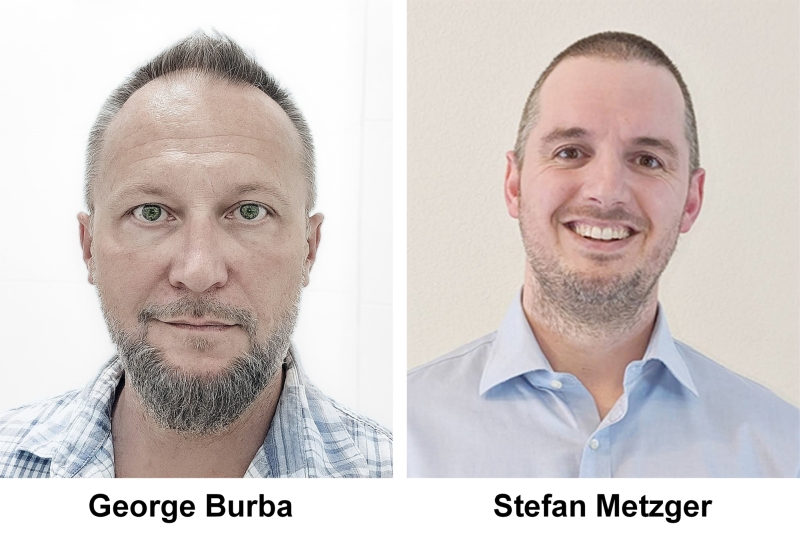Green Success Stories puts George Burba, Ph.D, and Stefan Metzger, Ph.D, founders of Carbon Dew, in The Green Spotlight. Carbon Dew is an international non-profit representing carbon and climate experts from over 200 organizations.

Tell us a bit about the product or solution you offer.
The CarbonDew Community of Practice is an international non-profit representing carbon and climate experts from over 200 organizations, ranging widely across research, industrial, economic, and regulatory sectors.
Our vision is to anchor fair and equitable climate solutions in direct atmospheric measurements, and our mission is to facilitate technology transfer through providing a medium for public and private entities to work together towards common goals.
We strive to translate surface-atmosphere science into real-world impacts and innovate industry practices with the best-available science.
To achieve this, we support integration and coordination on existing capabilities and resources for enhancing measurement and quantification of GHG emissions and removals.
Share a green success story with us – how have you helped customers or other businesses in the fight against climate change?
We both have been in climate science and carbon monitoring for tens of years, Stefan overseeing the atmospheric measurements program at the National Ecological Observatory Network and working closely with similar monitoring organizations globally, and George developing instrumentation to measure the movement of carbon, heat, and energy in and out of the atmosphere, and teaching about such measurements.
A few years ago, we started talking about how it is that we have all these international accords, agreements, and all sorts of protocols, but CO2 just keeps climbing up, ice keeps melting, and extreme weather events keep increasing in frequency and severity.
Two key things started getting obvious: science is significantly separated from the everyday practical world in language, style of communication, and overall positioning; and the current methods used outside academic research are really old, not practical for daily-weekly carbon/GHG management, and just too slow and unreliable to support either volunteer carbon market or regulated market.
This gave us the idea of creating a safe space, a Community of Practice, where any stakeholder, from a farm operator or Oil & Gas industry executive to a Nobel laureate, can connect to each other and learn about the latest scientific tools that can actually help.
For example, help a person to see if what they are doing improves carbon uptake while building thicker more fertile soil, help quickly recognize and locate gas distribution leaks, reduce corporate footprint and rightfully claim marketing advantage, or put a price on the ecosystem services (aka useful good things) provided by a neighboring forest, grassland, or wetland.
This is how CarbonDew was created, and attracted stakeholders from over 200 organizations, ranging from climate startups and university groups to large multinational corporations in just over a year.
CarbonDew provides an email list for members to connect and interact across traditional disciplinary divides and organizes gatherings at national and international conferences. We also respond to requests for information from both public and private stakeholders in climate solutions, co-host cross-sector workshops, and actively support funding proposals.
What would you do with $1 billion dollars?
The $1B can be invested in a diversified portfolio of climate-friendly and nature-friendly industries, and conservative 5% yearly returns can be withdrawn without touching the principal investment, also corrected for inflation.
This $50M per year can then be used to establish a permanent global emission/sequestration monitoring network. This network would be very similar to the current automated weather station network, but instead of weather stations, these would be what we call “flux stations” directly measuring emissions and sequestration of carbon, GHGs, heat, and water vapor.
Over 2000 such stations existed over the past 50 years across the globe in the academic world giving superior observing powers over the movement of carbon, GHG, heat, and water in and out of the air.
Very similar to how well-established omnipresent and boring automated weather stations tune remote-sensing based weather models, producing global coverage of sunlight, temperature, humidity, and winds, we would get flux stations tuning remote-sensing based emission/sequestration models producing global coverage for sequestered carbon, emitted GHGs and heat, and reporting water losses.
Then this data layer can be used by academic, regulatory, and commercial organizations to create value-added products, again very similar to what is currently done with weather data.
What do you envision your industry looking like in ten years?
In ten years, more like 30 (!) we hope carbon management will become a boring daily affair, very much like the weather now.
But also, a farmer in Africa will routinely get their $5 per week for growing a cover crop, a forest manager in Malaysia will get their $10 per month for not touching that forest protecting its huge carbon storage, and producers in the US will be able to decide how they prefer to farm in the specific region with the specific crop to yield the most efficient income.
The carbon market will be based on actual data, and carbon decisions can be managed on a daily-to-weekly basis based on actual observable results.
Then the world would become a bit more equitable where developing countries can get a bit of help to keep their nature and develop their agriculture. The developed world would be able to offset some of their emissions driven by technological progress.
We would also have mobile apps satisfying our curiosity on what our neighboring prairie or forest gives to our community, educating people with real reliable information, and with no political angle or undertone.
These and a lot more good things can happen if carbon sequestration is traded like a commodity based on actual directly measured numbers.